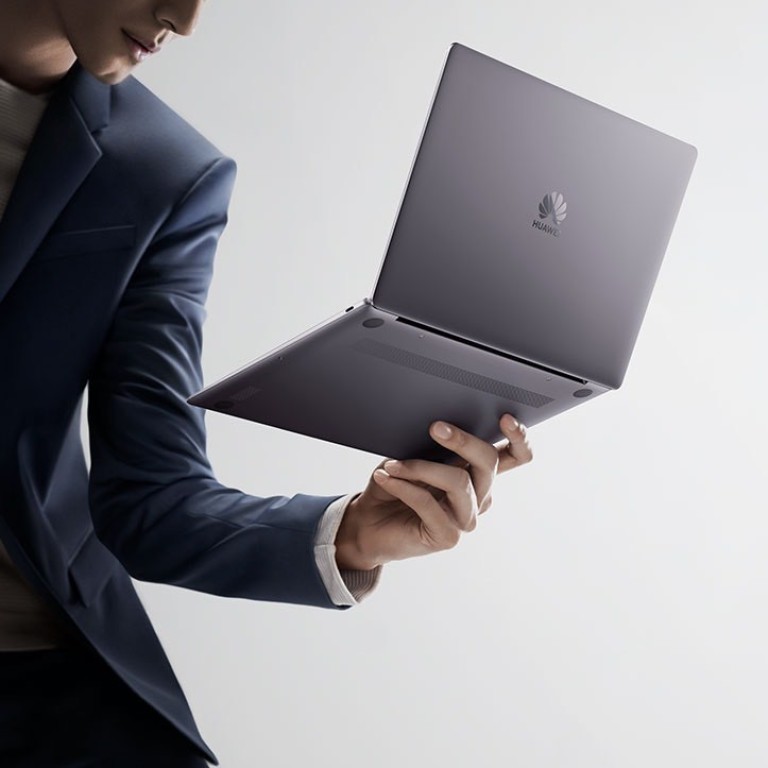
Huawei launches new MateBook 13 laptop for US market as it struggles to sell telecoms gear, smartphones
- Personal computers represent Huawei’s main business in the world’s biggest economy
- The new MateBook 13 is a modified version of a laptop that Huawei launched in China in November last year
Huawei Technologies, the largest smartphone vendor in China, has introduced a new laptop for the US market, as it moves to build a business in the world’s biggest economy without the governmental scrutiny that its telecommunications gear operation has attracted.
The Shenzhen-based company unveiled its new MateBook 13 on Sunday during a media briefing at a hotel in Las Vegas, ahead of the opening of this year’s edition of the annual CES trade show in the popular resort city in Nevada.
“Personal computers are Huawei’s primary business in the US, and the company is investing to compete in this market,” a Huawei spokeswoman said at the event. She added that Huawei started selling personal computers and tablets in the US in 2016.
The Windows-based MateBook 13 is a modified version of a laptop that the company launched in China in November last year and will be offered in two variants – one priced at US$999 and the other at US$1,299 – to US consumers. Huawei also launched a new 10.1-inch tablet, priced at US$299, at the same event.
Sales of the Huawei laptop will start from January 29 at Amazon.com and Newegg, a US online retailer owned by Shenzhen-traded Hangzhou Liaison Interactive Information Technology.
Huawei will also have the MateBook 13 available to a major US consumer electronics retailer from February, according to the company, without disclosing its new partner’s identity.
Huawei’s launch of a laptop personal computer in time for CES, the world’s largest consumer technology trade show, marks a calculated shift in strategy in the US, where the company has struggled to sell smartphones to consumers and network equipment to telecommunications services providers because of security concerns raised by Washington.
Last week, the company gave an upbeat forecast of surpassing US$100 billion in revenue in 2018, despite the legal drama surrounding its chief financial officer Sabrina Meng Wanzhou who was arrested in Canada and is currently out on bail.
Huawei has consistently pushed back on efforts by the US and other governments to blacklist the company on security grounds without proof.

Devices from Huawei still work on the networks of both Verizon and AT&T, but direct sales would have allowed the Chinese tech giant to reach more US consumers than it can through third-party distributors. An estimated 90 per cent of smartphones in the US are sold through carriers.
Huawei’s core telecoms equipment business has also taken a hit in the US because of concerns that its gear contains flaws and “back doors” that enable spying by the Chinese government. Huawei has denied links with the Chinese military and that its network gear poses a security threat.
Still, Huawei’s shift in US focus has come at an opportune time. US personal computer shipments have been rising because of growing demand for enterprise and gaming laptops, according to research firm IDC.

